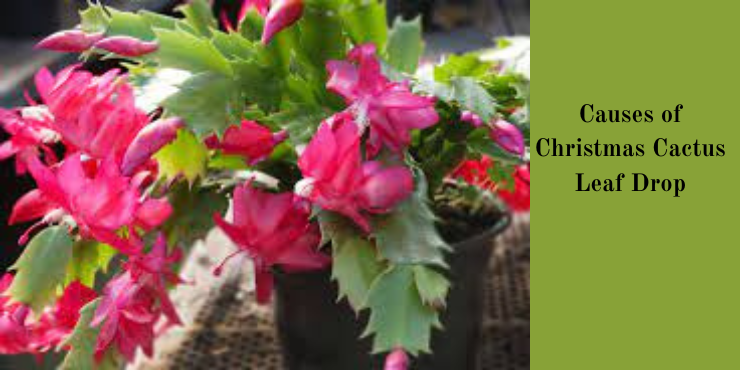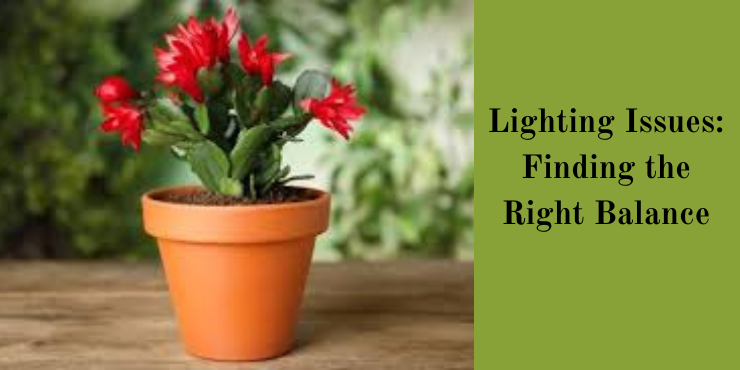Why is my Christmas cactus dropping leaves?
Why is my Christmas cactus dropping leaves, Christmas Cacti (Schlumbergera) are beloved for their stunning appearance and their tendency to bloom during the holiday season, making them stand out when other plants are at their lowest. Moreover, these resilient plants can continue to bloom year after year for decades. However, witnessing your Christmas Cactus shedding leaves can be a cause for concern. Let’s explore the reasons behind this phenomenon and how to ensure your Christmas Cactus remains in robust health.
Unraveling the Mystery: Why Do Christmas Cacti Drop Their Leaves?
Christmas Cacti are native to the lush rainforests of Brazil. They thrive in environments that mirror their natural habitat in terms of light, humidity, and temperature. However, when you bring them into your home, the conditions may not be ideal, which can stress the plant and lead to leaf drop. This advice is equally applicable to other holiday cacti varieties, such as Thanksgiving Cacti, Easter Cacti, and more.
Causes of Christmas Cactus Leaf Drop

1. Overwatering: The Silent Culprit
Overwatering is a common mistake when caring for Christmas Cacti. While they do require more water than desert cacti, it’s crucial to remember they are still cacti. Overwatering can result in root rot, causing leaf drop. Factors contributing to overwatering include poorly draining soil, pots with insufficient drainage, or overly large containers.
Why Does Overwatering Cause Leaf Drop?
When overwatered, Christmas Cacti absorb more water than needed. This can lead to edema of the leaf tissue and damage to the plant. Excess water can also invite infections and pests, leading to more leaf drop. Sustained overwatering can result in root rot, preventing the plant from absorbing vital nutrients, and causing further leaf shedding.
How to Remedy Overwatering:
- Check for signs of root rot by inspecting the roots.
- Gently remove loose soil from around the roots.
- Use sterile pruners to trim affected roots.
- If necessary, prune the plant back proportionately to support the remaining healthy roots.
- Consider using a fungicidal preparation on the roots to prevent root rot recurrence.
- Repot the plant in a well-draining mix with appropriate pot size.
- Provide moderate growing conditions post-repotting for stress reduction.
2. Preventing Christmas Cactus Leaf Drop from Overwatering

To avoid overwatering, check the top 1-2 inches of soil’s dryness. Water your Christmas Cactus when the soil feels dry, rather than adhering to a strict watering schedule. Ensure thorough watering, allowing excess water to drain out, and empty the drip tray.
3. Underwatering: A Common Misconception
Despite its name, the Christmas ‘Cactus’ still needs regular hydration. Neglecting to water your Christmas Cactus can lead to leaf drop due to dehydration and reduced blooming.
How to Remedy Underwatering:
- Water the plant when the soil is bone dry, ensuring deep penetration to reach the root ball.
- Let the container sit in a dish of water for 10-15 minutes to rehydrate the roots, especially during summer growth periods.
4. Lighting Issues: Finding the Right Balance

Christmas Cacti thrive in bright, indirect light, emulating their natural rainforest habitat. Exposure to direct sunlight can scorch the leaves, causing them to drop.
How to Adjust Lighting:
Place your Christmas Cactus in an area with bright but indirect light to help it thrive.
5. Over-Fertilizing: Too Much of a Good Thing
Over-fertilizing can damage the plant’s roots, causing leaf drop. While a little fertilizer is beneficial, excessive amounts are toxic and can lead to leaf issues.
How to Correct Over-Fertilizing:
- Look for white crusts on the soil surface, indicating nutrient build-up.
- Reduce fertilization and flush the soil with water to dissolve excess fertilizer salts.
- Prune damaged roots and repot the plant in fresh potting mix.
- Follow a monthly feeding schedule from April to September with balanced houseplant fertilizer, skipping fall and winter months when it blooms.
6. Temperature Changes: Protecting Your Cactus
Extreme temperature fluctuations can induce leaf drop. Ensure your Christmas Cactus remains in the temperature range of 65-85°F (18-29°C) during summer and avoid exposure to drafts and cold air vents.
How to Maintain Optimal Temperature:
- Keep your Christmas Cactus within the recommended temperature range.
- Shield it from cold or hot drafts and direct sources of temperature variations.
7. Pests: Unwanted Intruders
Although Christmas Cacti are relatively resistant to pests, infestations can occur, leading to leaf drop. Common pests include mealybugs, aphids, and spider mites.
How to Handle Pest Infestations:
- Dislodge pests with a forceful water spray.
- Use insecticidal soap or neem oil spray if necessary.
- Remove mealybugs with a soft toothbrush.
- Isolate the affected plant from others to prevent further infestations.
A Silver Lining: Propagation from Dropped ‘Leaves’
If your Christmas Cactus sheds leaves, remember that these “leaves” are segmented branches. If they appear healthy, you can plant them in a new container, potentially growing new plants.
In Conclusion
Leaf drop in Christmas cacti is a significant concern, as the leaves bear floral buds, and when leaves drop, so do the buds. To prevent this, carefully consider factors like watering, soil quality, temperature, light, and pot size. By addressing these elements, you can enjoy a healthy, leafy Christmas cactus with beautiful blooms.


